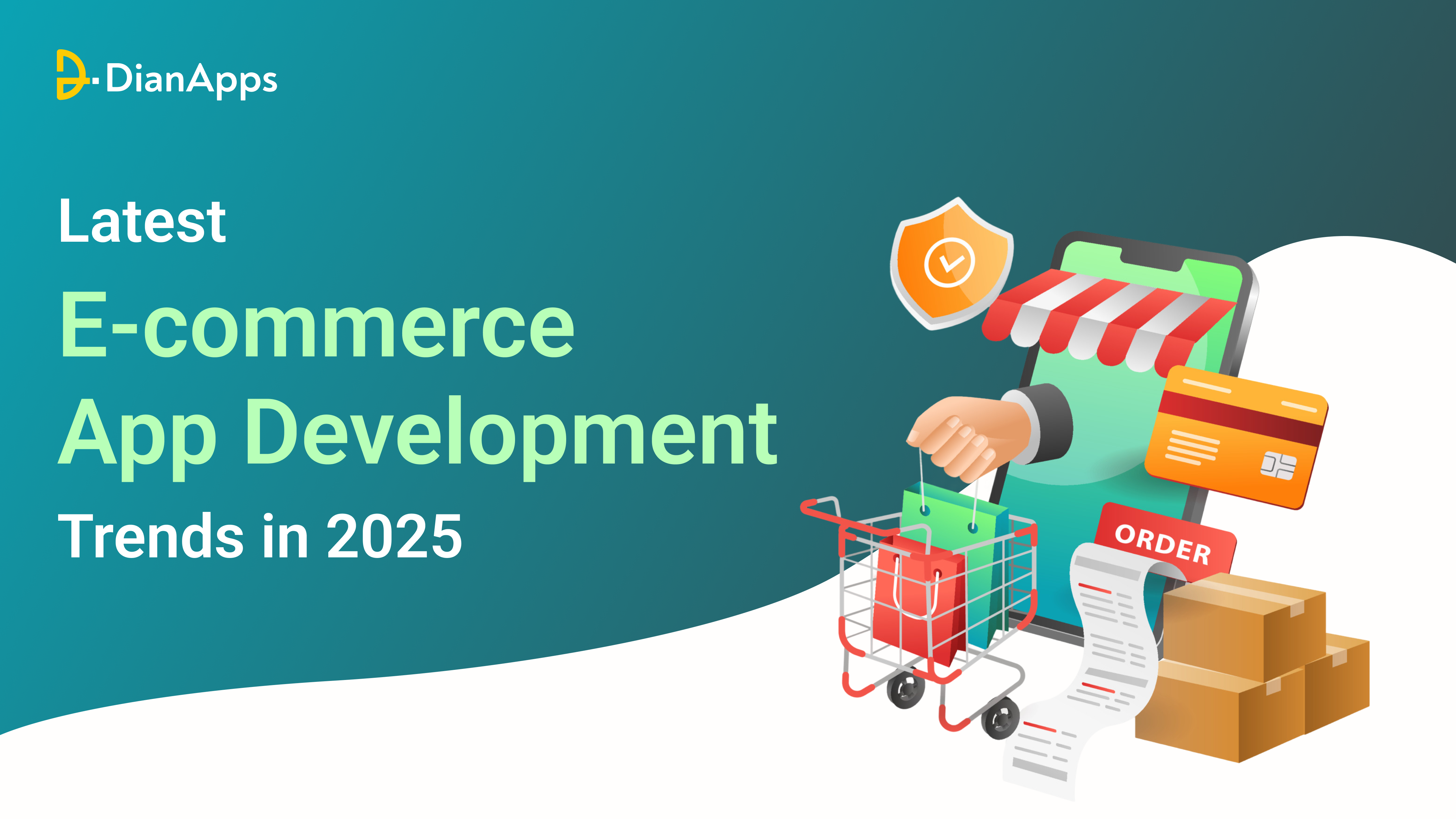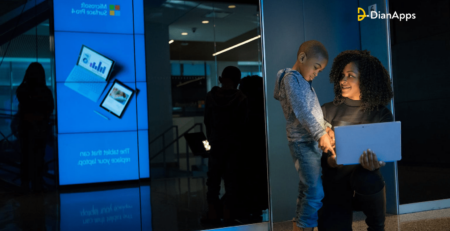Latest E-commerce App Development Trends in 2025
Shoppers today don’t want to stroll through crowded malls or wait in long queues. They expect speed, convenience, and personalization right at their fingertips.
That’s exactly what the eCommerce industry delivers. What began as a digital solution for easier shopping has now evolved into a personalized, AI-driven, and hyper-connected experience that fits perfectly into the lifestyle of modern consumers.
Recent data by eMarketer reveals that over 35% of the global population is shopping online. The industry has already crossed the $6 trillion mark and is projected to hit $8 trillion by the end of 2027.
But simply building an online store is no longer enough.
With competition growing every day, businesses must embrace emerging technologies and user-centric designs to stay ahead. Creating a smooth, intuitive, and feature-rich app has become a necessity, not an option.
That’s where an experienced eCommerce app development company plays a crucial role. From integrating cutting-edge features to ensuring seamless performance across devices, the right development partner can shape the future of your online business.
So, wondering what trends will redefine mobile commerce in 2025?
You’re in the right place. This blog explores the top eCommerce app development trends that will help your business grow today and in the years to come.
Why Staying Updated with eCommerce Trends Matters in 2025?
In 2025, the e-commerce industry is moving faster than ever. Global online sales are expected to hit 6.86 trillion dollars, with nearly 21 percent of all retail purchases happening through digital platforms. This surge reflects a major shift in how consumers prefer to shop.
What worked a year ago might not work today. Shoppers now expect smooth navigation, personalized recommendations, flexible payment options, and a seamless mobile experience. If your platform fails to meet these expectations, chances are customers will move on to competitors who do.
Staying informed about the latest mobile commerce trends helps you align with changing user behavior, adapt to new technologies, and stay relevant in a saturated market. It is not just about keeping up. It is about leading the way and building a shopping experience that your users remember and return to.
Recommended Read: How To Start An E-Commerce Business? A Comprehensive Guide
Top eCommerce App Development Trends to Watch in 2025
Let’s explore the biggest shifts in online shopping this year. These innovations are shaping everyday shopping experiences and driving real results for businesses and users alike.
AI-Powered Personalization
Shoppers today want apps that feel tailored to their needs. With smarter algorithms, businesses can now offer experiences that are not just fast but highly relevant.
AI collects and analyzes massive data points like purchase history, browsing behavior, and even time spent on each product. The result? Highly targeted suggestions that resonate with each individual user.
Picture this: A user opens an app and sees clothing picks that match their last searched styles or flash deals aligned with their preferences. It makes shopping faster, more intuitive, and enjoyable.
This personalized journey boosts engagement, increases order value, and strengthens brand loyalty. It also keeps users coming back, knowing the app understands their taste and needs.
Voice Commerce Integration
Voice commerce is revolutionizing the way users interact with mobile apps. The growing popularity of smart assistants like Alexa, Google Assistant, and Siri has paved the way for hands-free shopping.
Think of someone cooking dinner, realizing they need to reorder groceries. With voice-enabled apps, all it takes is a simple command. No clicking, no scrolling, just a smooth, effortless action.
This feature is especially beneficial for users with disabilities, multitaskers, or those constantly on the go. It makes apps more accessible and inclusive for a wider audience.
As natural language processing evolves, voice search will become even more intelligent, turning casual speech into accurate actions.
AR/VR for Virtual Shopping Experience

Augmented and virtual reality are reshaping the way users explore products before buying. This tech bridges the gap between physical and digital shopping.
Imagine a user trying on sunglasses using just their phone camera or seeing how a sofa fits in their living room through the screen. It eliminates the guesswork and enhances buyer confidence.
Retailers using AR see reduced returns, higher satisfaction, and longer app engagement. It makes mobile shopping less of a gamble and more of a guided, enjoyable process.
The immersive nature of AR and VR also creates a lasting brand impression and sets businesses apart from competitors.
Social Commerce and Shoppable Content
Social media is now more than a place to connect. It has become a direct path to purchase.
Shoppable posts and influencer-driven content allow users to buy products without ever leaving their social feed. It blends entertainment with instant gratification.
Apps that integrate with platforms like Instagram, TikTok, and Pinterest offer smoother experiences, especially for Gen Z and millennials.
This trend also empowers micro influencers to drive sales with authentic recommendations, building trust in both the product and the platform.
One-Click Checkout and Faster Payments
Convenience drives conversions, and nothing is more convenient than one-click checkouts. Today’s users expect lightning-fast payments with minimal effort.
Apps that support saved payment methods, digital wallets, and auto fill make it easier for users to complete purchases.
Speed reduces cart abandonment and improves customer satisfaction. A long checkout process can cost businesses millions in lost sales each year.
Faster, secure transactions also allow for impulse buys, boosting overall revenue.
Headless Commerce Architecture

Headless commerce is gaining momentum in 2025. It gives companies the flexibility to deliver content faster and adapt their user interface without overhauling the backend.
Developers can work on improving app performance, while marketers can fine-tune the design and content. This speeds up deployment and enables consistent brand experiences across devices.
With changing customer expectations, this kind of agile setup is no longer optional. It is essential for long-term growth.
Omnichannel Shopping Experience
Today’s customers often start their journey on one device and finish it on another. That’s why seamless shopping across platforms is a major trend.
From mobile apps to in-store visits, users expect a connected experience that remembers their activity, preferences, and past purchases.
Apps supporting real-time sync, in-store pickup, and push notifications for abandoned carts create a cohesive and memorable journey.
This approach not only improves customer satisfaction but also boosts repeat visits and trust in the brand.
Advanced Chatbots and Conversational UI
Chatbots are smarter than ever, thanks to AI and natural language processing. They go far beyond scripted replies to engage users in meaningful, productive conversations.
Users can now search for items, track orders, get custom product suggestions, and even complete transactions through a chatbot.
These assistants are available 24/7 and help businesses manage support without increasing human workload.
A good chatbot adds personality to the app, enhancing the overall user experience.
Blockchain for Secure Transactions
Security and transparency are crucial in digital payments. Blockchain helps by recording every transaction in a secure and unchangeable format.
This protects users against fraud and gives them peace of mind while sharing sensitive financial information.
It also builds long-term credibility for the app, which is especially important in financial or luxury product categories.
More e-commerce platforms are exploring blockchain for everything from payment security to inventory tracking. So, we can say blockchain enhances mobile security.
Green Commerce and Sustainability Features
Sustainability isn’t just a buzzword anymore. It’s a deciding factor for many online shoppers.
From eco-friendly packaging to digital receipts and carbon offset options, e-commerce apps are offering users more ways to shop responsibly.
Apps that promote green habits or display sustainability scores help customers make conscious choices.
This not only helps the planet but also builds customer loyalty and brand differentiation.
How These Trends Impact User Experience and Business Growth
- Mobile ecommerce trends improve personalization, which leads to higher user engagement and longer app sessions.
- Mobile e-commerce development supports fast and easy navigation, reducing bounce rates and improving conversions.
- Mobile commerce app development encourages seamless checkout and smart recommendations that increase average order value.
- E-commerce application development enables flexibility and scalable architecture to support long-term business growth.
- E-commerce mobile app development enhances user trust with secure payment gateways and reliable app performance.
- Mobile commerce trends help apps reach users where they spend most of their time, improving visibility and brand awareness.
- Mobile e-commerce app development ensures consistency across platforms, building stronger omnichannel brand loyalty.
- E-commerce mobile app development supports advanced chat features, leading to quicker issue resolution and better satisfaction.
- Mobile shopping trends push for innovation in UX design, making shopping intuitive and frustration-free.
- Mobile app development for e-commerce unlocks opportunities to stand out in a crowded market and stay ahead of the competition.
Recommended Read: How E-Commerce Apps Are Shaping the Future of Retail
Key Strategies to Build an eCommerce Application
Building a successful eCommerce app in 2025 requires more than just launching a digital storefront. To compete effectively, you need a well-thought-out strategy tailored to today’s mobile-first users and evolving tech landscape.
Define Clear Business Goals
Start by identifying your primary objectives—whether it’s driving sales, building brand awareness, or expanding to new markets. Your goals will guide the app’s design, features, and marketing approach.
Understand Your Target Audience
Conduct in-depth user research to uncover customer preferences, behavior, and pain points. This helps in designing features that truly matter to your users and increases app adoption.
Focus on Mobile First Design
Since mobile ecommerce continues to dominate online sales, it’s crucial to design a user interface that’s responsive, intuitive, and visually engaging across all devices.
Choose the Right Technology Stack
Your backend infrastructure should support scalability, fast load times, and smooth third-party integrations. Opt for frameworks that are flexible and adaptable to future trends.
Prioritize Security and Compliance
Ensure secure payment gateways, data encryption, and compliance with data privacy laws like GDPR. Security builds user trust and protects your brand reputation.
Optimize App Performance
Slow load times or laggy features can cause users to uninstall the app. Use lightweight coding, compress media files, and conduct performance testing regularly.
Integrate Smart Features
Incorporate features such as product recommendations, voice search, and chat support. These enhance user engagement and streamline the shopping journey.
Leverage Analytics
Use in-app analytics to monitor user behavior and identify friction points. This data-driven approach helps in continuously improving the app experience.
Plan for Marketing and Launch
Build excitement through email campaigns, social media teasers, and influencer collaborations. Post-launch, continue to promote updates and new features.
Gather Feedback and Iterate
User feedback is key to refinement. Regularly update your app based on user reviews and emerging trends to stay relevant and competitive.
Recommended Read: Cost-effective eCommerce App Development Services for Startups
Final Words
The world of e-commerce is moving fast, and 2025 will demand more from online shopping experiences than ever before.
Today’s users expect speed, personalization, and convenience, all wrapped into one seamless mobile journey.
To meet those expectations, businesses need to invest in smarter features, intuitive design, and forward-thinking strategies. It’s not just about keeping up, it’s about standing out.
Partnering with a reliable mobile app development company can simplify the journey. With the right support, your eCommerce app won’t just survive in a competitive market, it’ll lead it. The future of retail is mobile, and the time to innovate is now.




